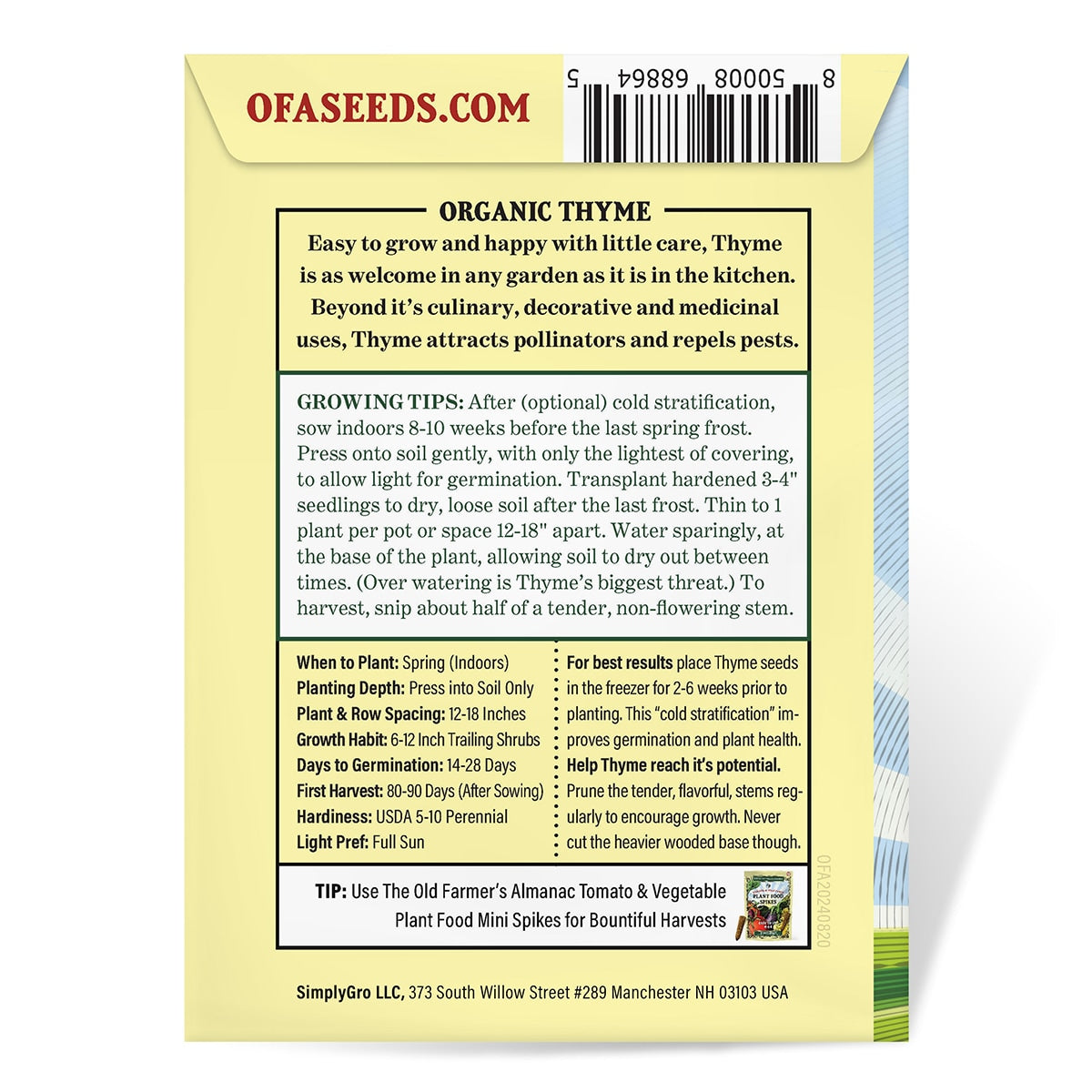Skip to product information

To add to cart, go to the product page and select a purchase option

The Old Farmer's Almanac Heirloom Thyme Seeds - USDA Organic
$5.95
Easy to grow and happy with little care, Thyme is as welcome in any garden as it is in the kitchen. Beyond it’s culinary, decorative and medicinal uses, Thyme attracts pollinators and repels pests. Premium, non-GMO, open pollinated, Heirloom, Organic Thyme Seeds from The Old Farmer's Almanac have high germination rates and are packed for the current growing season.
DESCRIPTION
INSTRUCTIONS & GROWING TIPS
SPECIFICATIONS
- Brand: The Old Farmer's Almanac
- UPC / GTIN: 050008688645
- Country of Origin:
- Derived From:







